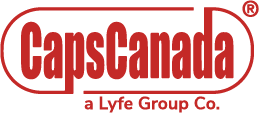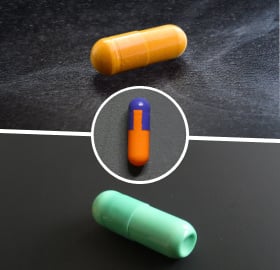“An ounce of prevention is worth a pound of cure.”
~ Benjamin Franklin
“No safety, know pain. Know safety, no pain.”
~ Anonymous
The first time you saw an automatic capsule filling machine in action, the efficiency of its operation may have mesmerized you. Safety may have been the last thing on your mind. However, if you are working with automatic capsule filling machines, safety—for you, the product and the machine—should always be your top priority.
The following provides an overview of steps to take in order to safely use an automatic capsule filling machine.
#1: Ensure all operators are properly trained
You cannot take a new or temporary employee, put them in front of the automatic capsule filling machine and expect that they will not get hurt, damage the machine or contaminate the product. You must provide appropriate training.
What is “appropriate training”? It’s a lot more than a five-minute explanation of “here’s the start button, keep this hopper full of empty capsules, keep this hopper full of powder and holler if you run into problems.” That approach is a recipe for disaster!
At a minimum, training should provide step-by-step instructions on how to start, clean, disassemble/reassemble and troubleshoot the machine. Training should also cover the use of machine guards (which must always be in place when the machine is being operated), and lockout/tagout procedures for when the machine is being cleaned or repaired. Ideally this training should also include anywhere from one or two days to a few weeks of shadowing an experienced operator.
#2: Wear personal protective equipment
Because they are meant for human consumption, pharmaceutical and nutraceutical products should be made in a clean, sterile environment. Anyone entering the capsule filling room must wear appropriate personal protective equipment. To safeguard the end product from coming into contact with germs or other contamination, it is standard practice to require personnel to wear lab coats or other garments to cover street clothes, hair nets, shoe covers and gloves. Some facilities also require safety glasses and hard hats.
#3: Create a safe working environment
To help create a safe working environment, you should:
- Reduce floor clutter – The setup around an automatic capsule filling machine can get quite cluttered. The machine itself requires power, vacuum, dust collection and compressed air, each of which involves hoses and/or power cords. In addition, there are optional pieces of equipment that can be hooked up to the capsule filling machine to further automate the process, such as machines to automatically feed the empty capsules or fill material into the hoppers.
All of this should be installed in an orderly fashion so that potential tripping hazards are eliminated. An environment in which the operator must navigate a maze of hoses, cords and wires is not a safe environment.
- Remove carts before running the machine– Sometimes small carts are used to bring tools or parts to the machine. As part of the effort to reduce floor clutter, remove these from the room before running the machine.
- Keep tools on wall-mounted tool boards – A great way to ensure that tools are both out of the way and easily accessible is to keep them on wall-mounted tool boards. Organize the tools for maximum efficiency, and then place a silhouette of each tool on the board to make it simple for everyone to know where each one belongs.
#4: Maintain a clean environment
If you are encapsulating powders, a cloud of dust tends to build up and coat everything. While some powders make more of a mess than others, all must be cleaned up between runs of different products and during longer product runs in order to keep the machine running well.
To avoid cross-contamination from one product to the next, the walls and floors of the automatic capsule filling machine room must be properly cleaned in between product runs. Many facilities install special wall panels meant for easy cleaning or wipe down.
Having personnel wear personal protective equipment is also part of the room cleanliness effort.
In addition, the automatic capsule filling machine itself should be disassembled and thoroughly cleaned after every product run.
#5: Prepare the capsule filling machine before using it
Before you start a production run you should:
- Clear the machine area– Remove any tools or extra items from the tabletop, and move anything that does not need to be there out of the way.
- Ensure de machine is completely assembled – After the last product was run the machine should have been completely disassembled, cleaned and then reassembled. Whoever did that should have used a check list to ensure that no step was overlooked. Now someone other than the person who did the assembly – usually either a supervisor or a member of the set-up team – needs to do a final check.
- Visually inspect the machine– The operator who will be running the machine should also do a visual inspection to ensure that nothing looks out of the ordinary. Remember, these are very expensive and potentially dangerous pieces of machinery; you do not want an error to result in harm to the operator or machine.
#6: Start up the capsule filling machine in stages
If something is wrong, troubleshooting will be quite a bit easier if you start up the automatic capsule filling machine in stages, as follows:
- Cycle the empty machine manually– Before adding capsules or fill material, use the hand wheel to manually run the machine through a few cycles. Look, listen and feel for any type of issue.
- Run the empty machine automatically – Next, power up the machine and run it empty, still without any capsules or fill material. Once again, watch to make sure everything is functioning correctly.
- Run the machine with capsules–Add the empty capsules and do another check to be sure that everything is functioning properly. If the capsules are not loading, separating and locking the way they should, something may be misaligned on the machine.
- Add the fill material – Once the machine is running well with the empty capsules, add the fill material and adjust the machine to achieve proper weights before using a capsule length gauge to establish the proper closing length of the capsules. Finally, do a quality inspection of the finished product. Make any needed adjustments before proceeding to the production run.
#7: Keep things clean during operation
Depending on the length of the product run and the characteristics of the fill material, you are likely to need to periodically stop the machine to clean excess product off the table and other parts. This keeps powder build-up from interfering with the functioning of the machine.
#8: Follow the “5S” continuous improvement principle
As the American Society for Quality explains, 5S is “a methodology that results in a workplace that is clean, uncluttered, safe and well organized to help reduce waste and optimize productivity.”
Conclusion
Need help reviewing your current safety procedures, training your employees, or taking other steps to improve the safety of your operation? Contact our Technical Services department.














